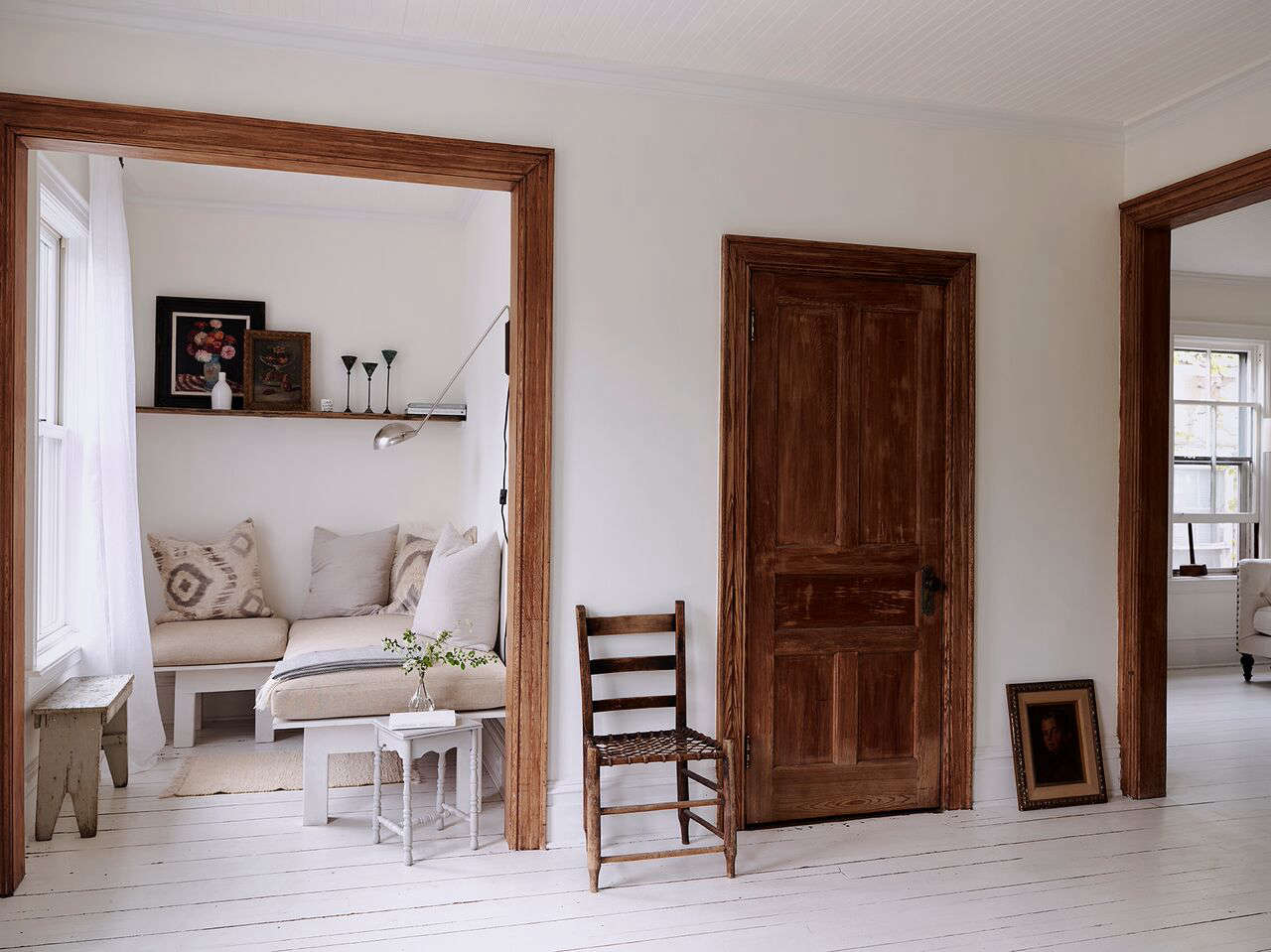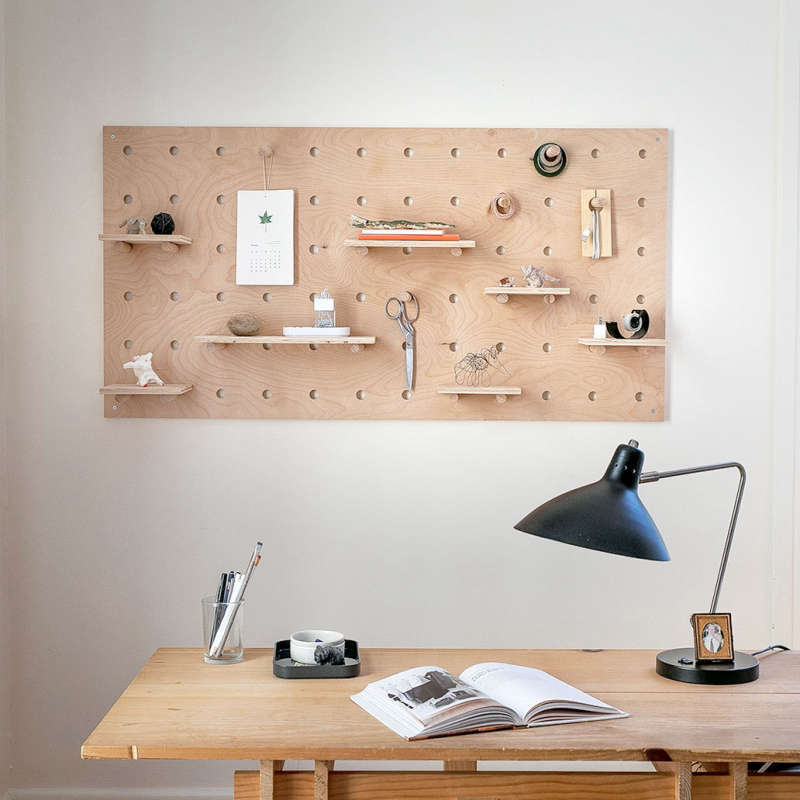This week we’re revisiting some of the most popular summer stories from the archives. Here’s one:
Those lucky enough to eat at The Lost Kitchen in an old mill building in Freedom, Maine, say there are a million tiny things throughout the night that will stick with you: the long wooden footbridge you have to cross to get there, the sound of the creek running outside the mill windows, and the moment that dusk falls and Erin French herself, the chef-owner-visionary behind the place, comes around to each table to light a candle. It’s details like these that prompt 20,000 people all over the world to mail in a postcard each spring, hoping to be drawn for a seat at the table. (Read about the restaurant’s story in The Lost Kitchen: A Glimpse Inside Maine’s Most Wildly In-Demand Restaurant.)
But among the most thoughtful of these details—for diners who’ve traveled 139 miles north from the Maine border through winding back roads, or from much further afield—are handmade cooling cloths, one at each place. Laid on the back of the neck or dabbed on the wrists, they’re a respite from the Maine heat and an invitation to slow down before the meal. Nancy, a member of the nearly all-female team, prepares them before each evening’s seating; we asked her for instructions, for re-creating a sliver of the experience at our own dinner parties. Here’s what she said.

Ingredients and Supplies
- Rosewater (10-ounce bottle)
- Twine (4-5 inches per cloth)
- Lavender (one or more stems per cloth, cut to approximately 3 inches in length)
- Scissors
- Medium bowl
- Cloths [The Lost Kitchen uses 12-inch square cloths made of linen]
Instructions
- In a medium bowl, add equal parts of rosewater and room-temperature tap water. Set aside. (Note: Regardless of how many rolls you’re assembling, you’ll need at least an inch or two of liquid, 2 ounces of water and 2 ounces of rosewater. 10 ounces of water and 10 ounces of rosewater will do 40-50 cloths.)
- Dampen cloths with plain tap water.
- On a clean surface, lay out 1 cloth, wrong side up. Fold the right-hand vertical side in toward the center of the cloth. Repeat with the left side. The result should mimic a set of doors, hinged left and right, closing in the middle. Next, fold the right vertical “hinge” over to meet the left vertical hinge, like closing a book.
- Start rolling tightly and evenly from the bottom to the top.
- Dip the completed roll-up in the rosewater mixture set aside in Step 1. Squeeze gently to remove excess liquid.
- Using 4-5 inches of twine, loosely tie the roll with a single knot.
- Gently slip a sprig of lavender beneath the knot and tighten gently to secure in place. Snip ends to appropriate length.
- Store in a covered container until ready to use. Refrigerate for additional freshness.
More simple DIYs for the end of summer:
- Essential Oils DIY: An All-Natural Lavender Linen Freshener
- DIY: An Artful Botanical Garland by Måurice in Portland, OR
- DIY: Homemade Dish Soap
N.B.: This story originally ran on August 23, 2018 and has been updated.
Frequently asked questions
What are cooling cloths?
Cooling cloths are specially designed fabrics that provide a cooling effect when wet. They are perfect for keeping you cool and refreshed during hot weather or physical activities.
How do cooling cloths work?
Cooling cloths work through the process of evaporation. When the cloth is wet, the water gradually evaporates, which creates a cooling sensation on the skin.
Can I use any fabric to make cooling cloths?
It is recommended to use specific fabrics designed for cooling purposes, such as lightweight and breathable materials that can retain moisture for longer periods. However, you can experiment with different fabrics to see which ones provide the best cooling effect.
How can I make cooling cloths at home?
To make cooling cloths at home, you can follow the DIY instructions provided in the article. It involves cutting the fabric into desired shapes, sewing the edges, and then wetting them before use.
Do I need any special tools or equipment to make cooling cloths?
No, you don't need any special tools or equipment. The DIY instructions mentioned in the article can be easily accomplished with basic sewing supplies and materials.
Can I customize the size and shape of cooling cloths?
Yes, you can customize the size and shape of your cooling cloths according to your preferences. The article provides guidance on cutting the fabric into rectangles, but feel free to get creative and create different shapes to suit your needs.
How long does the cooling effect last?
The duration of the cooling effect depends on various factors such as the fabric used, the ambient temperature, and the level of evaporation. Generally, the cooling effect can last for several hours before the cloth needs to be re-wetted.
How should I store the cooling cloths when not in use?
It is best to store the cooling cloths in a cool, dry place. Avoid leaving them in direct sunlight or damp areas, as this can affect their performance and durability.
Can I wash the cooling cloths?
Yes, you can wash the cooling cloths. Follow the fabric's care instructions for washing and drying. It is recommended to clean them regularly to maintain their effectiveness.
Where else can I use cooling cloths?
Cooling cloths can be used in various situations, such as outdoor activities, sports, workouts, or simply to cool down during hot days. They are versatile and can provide relief in any situation where staying cool is desired.
Are cooling cloths safe for everyone?
While cooling cloths are generally safe for most individuals, it is always advisable to check for any allergies or sensitivities to the fabric. If you experience any discomfort or irritation, discontinue use and consult a healthcare professional.







Have a Question or Comment About This Post?
Join the conversation